What is VCB?
VCB stands for Vacuum Circuit Breaker. In vacuum circuit breakers, the vacuum is used as the arc quenching medium.
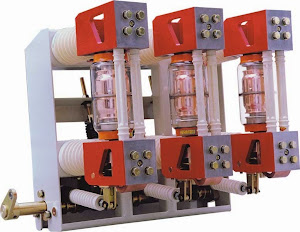
Vacuum offers the highest insulating strength. So it has far superior arc quenching properties than any other medium (oil in oil CB, SF6 in SF6 circuit breaker).
For example, when contacts of a breaker are opened in the vacuum, the interruption occurs at first current zero with dielectric strength between the contacts building up at a rate thousands of times higher than that obtained with other types of circuit breakers.
The degree of vacuum is in the range from 10^-7 to 10^-5 torr.
The technology is suitable for mainly medium voltage switchgear application. For higher voltage vacuum technology has been developed but not commercially viable.
Principle of Vacuum Circuit Breaker
The production of arc in a vacuum circuit breaker and its extinction can be explained as follows :
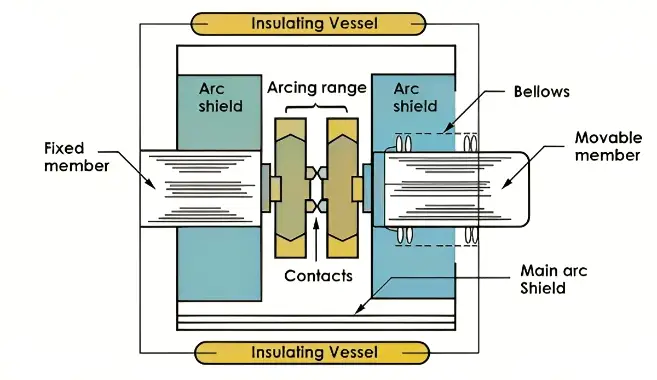
When the contacts of the breaker are opened in the vacuum (10-7 to 10-5 torr), an arc is produced between the contacts by the ionization of metal vapors of contacts.
However, the arc is quickly extinguished because the metallic vapors, electrons, and ions produced during arc rapidly condense on the surfaces of the circuit breaker contacts, resulting in a quick recovery of dielectric strength.
The salient feature of vacuum as an arc quenching medium is that as soon as the arc is produced in the vacuum, it is quickly extinguished due to the fast rate of recovery of dielectric strength in the vacuum.
Construction of Vacuum Circuit Breaker
Typical parts of the vacuum circuit breaker are shown in the figure.
It consists of fixed contact, moving contact and arc shield mounted inside a vacuum chamber (vacuum interrupter). It is shown as an insulating vessel in the given figure.
The movable member is connected to the control mechanism by stainless steel bellows. This enables the permanent sealing of the vacuum chamber so as to eliminate the possibility of the leak.
A glass vessel or ceramic vessel is used as the outer insulating body.
The arc shield prevents the deterioration of the internal dielectric strength by preventing metallic vapors from falling on the inside surface of the outer insulating cover.
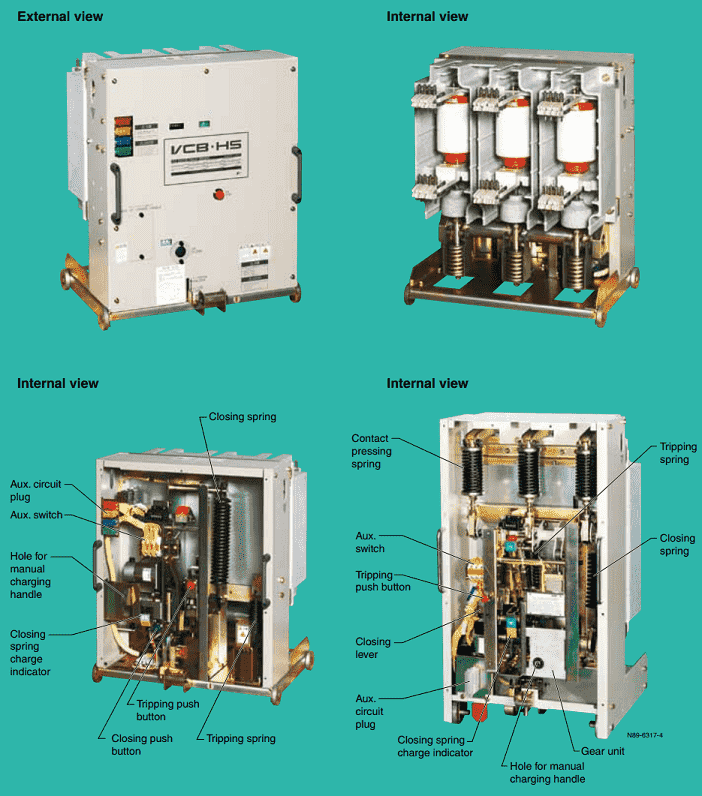
Vacuum Interrupter
The interruption of arc in a Vacuum Circuit Breaker is carried out by the vacuum interrupters.
In principle, a vacuum interrupter has a steel arc chamber in the center and symmetrically arranged ceramic insulators.
Refer the figures below showing the main parts of a typical vacuum interrupter. Modern constructions of this interrupter have a metal shield surrounding the arcing contacts.
The diameters of the contacts and their stems are matched with those of the arc chamber and insulators.The moving contacts are made movable by the use of metallic bellows.
The arc chamber is welded to the housing flange, which in turn are brazed to metallised ceramic insulators, thus giving a hermetically sealed interrupter. The vacuum pressure is generally 10-6 bar.
Interrupter contacts as a key part made of copper – chromium (CuCr) material with spiral shape have low contact wear characteristics and withstand voltage is excellent.
Spiral contacts make the arc generated between the surfaces of contacts rotated around the surface of contact by the induced magnetic field generated due to the spiral contact structure. This results in preventing local heating, thereby corruption and interrupting instantaneously.
Working of Vacuum Circuit Breaker
Vacuum circuit breakers are employed for outdoor applications ranging from 22kV to 66kV. Even with limited rating say 60 to 100MVA, they are suitable for the majority of applications in rural areas.
The working of Vacuum circuit breakers is briefly explained below,
- When the breaker operates, the moving contact separates from the fixed contact and an arc is struck between the contacts. The production of the arc is due to the ionization of metal ions and depends very much upon the material of contacts.
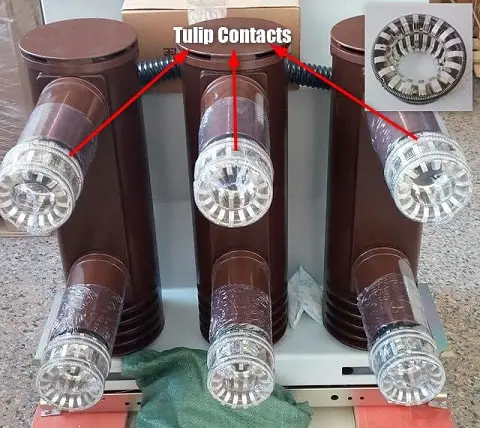
- The arc is quickly extinguished because the metallic vapors, electrons, and ions produced during arc are diffused in a short time and seized by the surfaces of moving and fixed members and shields.
- Since vacuum has a very fast rate of recovery of dielectric strength, the arc extinction in a vacuum breaker occurs with a short contact separation (say 0.625 cm).
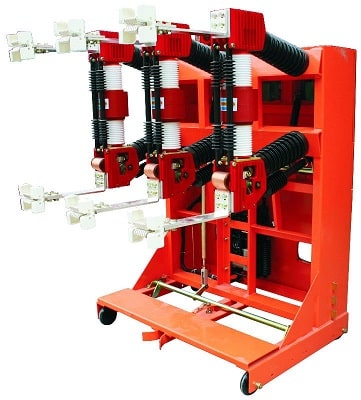
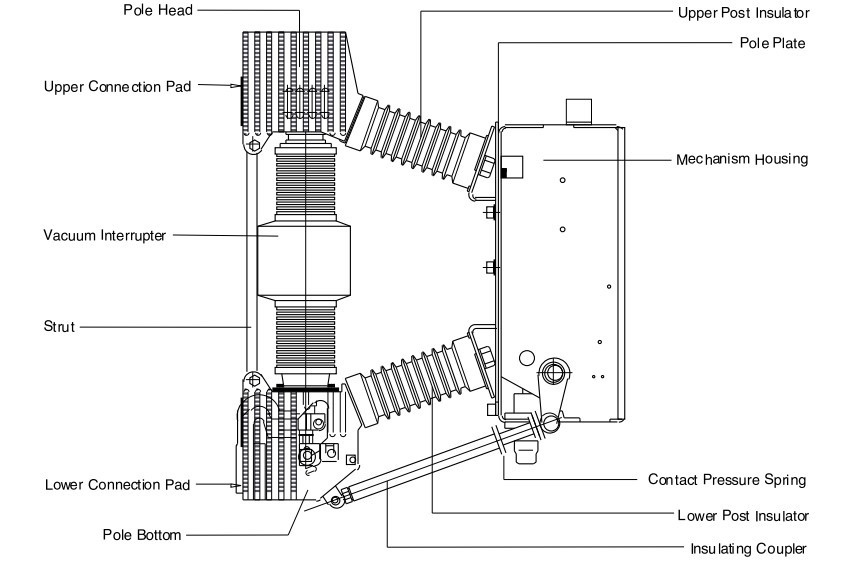
Application of Vacuum Circuit Breaker
Nowadays, vacuum circuit breakers applications to not only medium voltage power systems but also in high voltage substations or transmission systems.
It is because of VCB’s extremely advantageous characteristics such as high interruption capability, long operation life, safety and high cost-performance.
Based on the applications of these supreme characteristics, many promising new products are being continuously developed, so far and from now on.
In the recent years, vacuum circuit breakers got developed a lot and are used in various fields which are discussed in this section.
1. High Voltage Application
After Kyoto Protocol in 1997, SF6 gas is considered to be one of major global warming gases.
Since then a vacuum circuit breaker has become a most probable candidate of the potential equipment replacing SF6 gas circuit breakers.
Since it can interrupts a current in a vacuum without producing any special harmful gas to the environment, and it is also consisted of an ordinal ceramic or glass, and metallic components, a vacuum circuit breaker is considered a more desirable circuit breaker than SF6 one.
Therefore, the increment of its application voltage to higher one to replace SF6 type circuit breakers is desired.
2. DC circuit breaker for other applications
VCB is considered to be suitable for a DC current interruption, because VCB can interrupt under very high di/dt-dv/dt conditions and once a high frequency current is superposed on the DC current, it can interrupt a DC current very easily.
This means that the vacuum interrupter is easy to operate in very high frequency conditions, and as the result, we can design the DC circuit breaker in very small size.
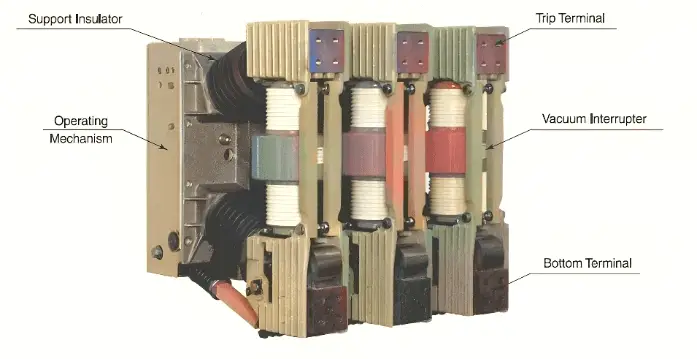
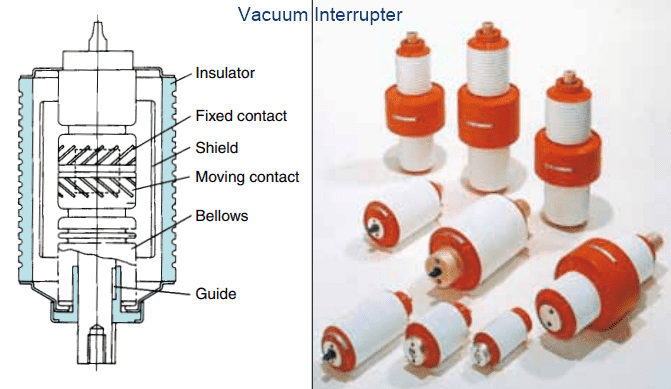
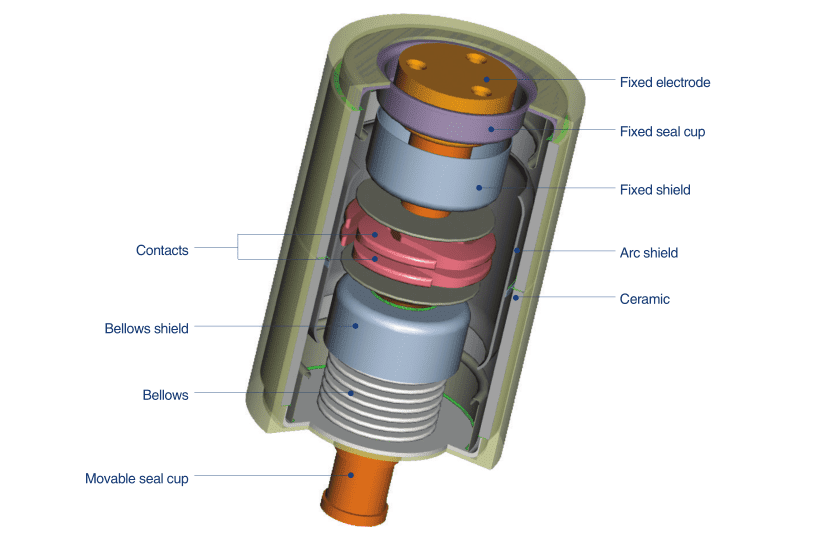
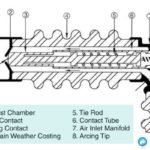
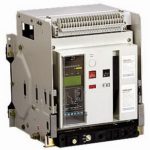
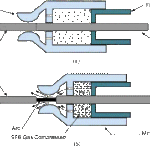

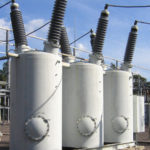
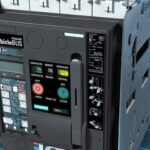
Nice post. good
Please explain more about vacuum interrupters
Plz tell me the solution that at vcb coming trip having a alarm ‘ tx common trip ‘
Usefull information. Thanks for sharing
what is the roll of ct coil in VCB switch ..
what is the Difference between ACB and VCB .
Read more about ACB here: https://studyelectrical.com/2014/12/working-of-air-circuit-breakers.html
Very clear details
nice article on vacuum circuit breakers
Thanks for this much information about vacuum circuit breakers
Well written about VCB. Thanks for the images
Hi
No indications on vacuum interrupters to show the state of vacuum to be sure to racking in the breaker safely in the high voltage cell .
The disadvantage of VCB may falshovr while in rack in position while open or close or during racking in and out .
I am witnessed this case .
Best regards
Gibriel elfakhri
Grouphead Supervisor
Relay and protection dept
Sirt oil company
Thank you so much for what you are writing. I have received a lot of information about it.
Your post is very nice. Vacuum Circuit Breakers (VCB) is must be carefully operation because Its supply high voltage.
I want to have a simple single line diagram showing how a 11kv vcb is connected in an electrical system. the diagram should be single to be shown to non-technical people.
Thank You For Sharing Great Information. for more details something like visit vaccum circuit breaker types get more informations.